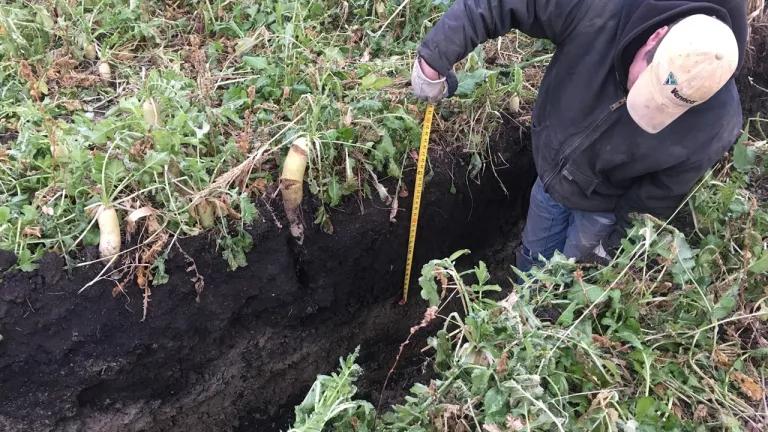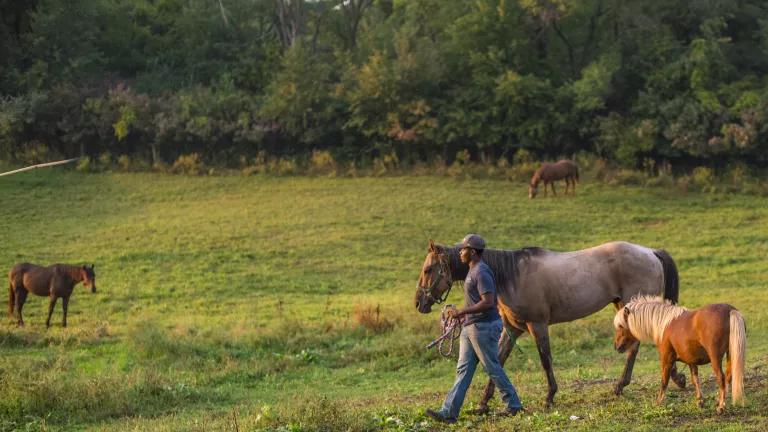The Climate Crisis is Reshaping the Future of Work
Introductory remarks from a recent panel discussing how the climate crisis will change the way we work and how it impacts the health and safety of workers

Worker cutting sugarcane with a machete in the Philippines, 2015
How will the climate crisis change the way we work and affect the health and safety of workers? That’s one of the many questions this week at the virtual Ceres 2021 Transform Tomorrow Today conference, where more than 1,000 corporate, investor, and non-profit leaders have gathered to discuss solutions to major global threats. I had the pleasure of appearing on a panel with Dr. Jisung Park, an applied environmental and labor economist with University of California Los Angeles, and Dr. Lara Skinner, the Director of the Worker Institute’s Labor Leading on Climate Initiative. Here are the introductory remarks I prepared for the conference.
Thanks so much for having me here today. Let’s start with a bit of a thought exercise.
I’d like you to take a minute to imagine that you cut sugarcane for a living. When you get to the fields in the morning it’s more than 80 degrees Fahrenheit. By early afternoon, it’s more than 105 degrees.
You’re wearing a head covering, gloves, long sleeves, and tall boots. All that clothing helps protect you from the sun and your own machete, but it makes you feel a lot hotter.
Over the next 12 hours you make more than 3,500 machete cuts and do the physical equivalent of more than 3,000 pushups. There’s no shade, and never enough clean water to drink. But you get paid by the ton, so you’re reluctant to take breaks even if you start to feel sick to your stomach and dizzy from the heat.
At the end of the day, you go back to a communal bunk house provided by your employer. But is there air conditioning? Nope. It’s a hot, crowded space and you have trouble sleeping. You wake up the next morning still tired, still heat-stressed, and still dehydrated from the day before.
A happy ending to this story would be that you keep working, with few or minor health problems. The less happy ending is what happens to hundreds of thousands, or possibly millions of people worldwide every year.
Their stories end with debilitating illnesses such as chronic kidney disease; disfiguring injuries associated with sweaty, slippery hands; or even death—from heat stroke, a heart attack, or more than two dozen other potentially deadly outcomes linked to heat.
Extreme heat has always been a problem for workers, but climate change is making it worse. Multi-day heat waves have become more frequent, severe, and longer. And climate change is raising the baseline temperature, turning winter into spring, spring into summer, and summer into a furnace.
Farmworkers, construction workers, and others who do strenuous labor outside are clearly among the most vulnerable to heat.
But climate change is also making conditions more dangerous for indoor workplaces without sufficient cooling or air filtration. This includes places like warehouses, kitchens, and even airplanes stuck on a tarmac. In 2015, for example, 60 percent of more than 300 garment workers surveyed in Los Angeles reported excessively hot and dusty conditions in their factories.
Of course, extreme heat isn’t the only workplace hazard worsened by climate change.
There’s wildfire smoke, which can exacerbate asthma and potentially contribute to lung cancer among firefighters and first responders. There’s a heightened risk of accidents at oil and gas facilities as hurricanes sweep over coastal areas. There’s increased exposure to infectious diseases carried by everything from mosquitoes, to fungus-laden dust, to contaminated floodwaters.And there’s the accumulated mental health trauma of working at one disaster scene after another, year after year, with shorter and shorter breaks in between.
You may have noticed that I haven’t offered you much quantitative data. That’s because we simply don’t have a good handle within the U.S., let alone elsewhere, of the full occupational health and safety toll of climate change. There are lots of reasons for that, including underreporting by workers and employers. Our public and occupational health tracking systems also weren’t set up for a climate-disrupted world.
I know that uncertainty about the scope and scale of the problem makes it harder for companies like yours to plan. But if there is one thing you take away from my segment, I hope it’s this.
Climate change isn’t just a corporate sustainability problem.
It’s not just about reducing emissions.
It’s about the health and safety of your direct employees and those in your supply chain.
It’s about what you do to ensure those workers—wherever they’re located in the world—keep bringing their best, healthiest selves to their job every day, and get home in one piece.
Protecting workers from climate change is fully within our grasp—but it’s only going get harder and more expensive the longer we wait to act. So, the time to act is now.
Thank you!




